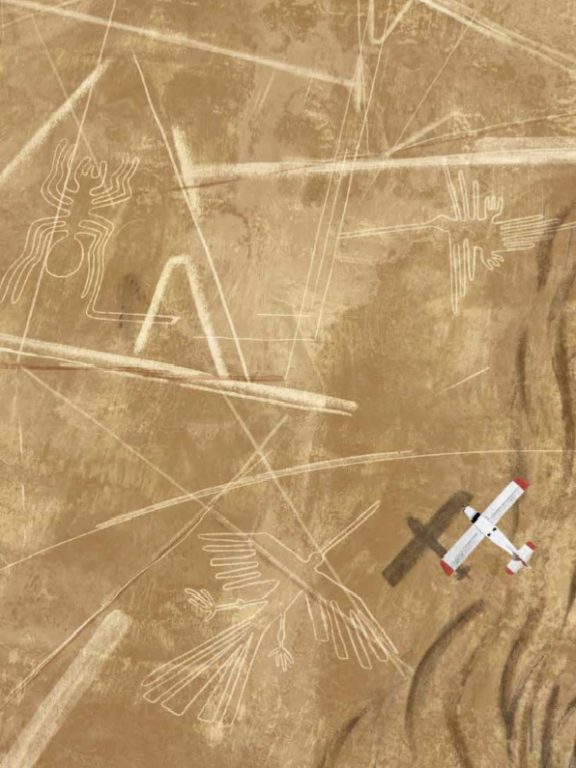During the research for my book, Strange But True, I discovered the story of Maria Reiche, an incredible woman who devoted her life to studying the Nazca lines.
What are the Nazca lines? Here is how I described them in an early draft of my book:
Along the coast of Peru and Chile, flat desert plains stretch as far as the eye can see, like a vast ocean of dust and broken rock. On large expanses of parched land, nothing grows. It is one of the most inhospitable and driest places on Earth. Yet over two thousand years ago, people left their mark on the desert. The Paracas, Nazca (also spelled Nasca), and other early cultures created huge images of geometric shapes, animals, and people. To make the pictures, called geoglyphs, they moved dark-colored rocks on the surface to the side to reveal the lighter-colored clay beneath. The pictured remained intact through the centuries thanks to a lack of wind and rain. The most stunning geoglyphs include a hummingbird, a lizard, a spider, a diving bird, and a monkey with a spiral tail. Even the most complex animal designs are formed from one continuous line. Starting at one end, a person can follow a path through the entire figure without ever crossing over his or her tracks or turning around.
Why make such giant designs in the desert? Many have marveled at the mystery. And some have offered explanations. The most bizarre theory holds that technologically advanced aliens or astronauts visited Earth long ago.
This was the original opening of the chapter now titled “The Star of Deep Beginning.” That chapter went through more edits than any other. It originally focused almost entirely on the Nazca lines, but I wound up cutting a lot of that information in order to include other mysteries that some people believe support the idea that intelligent aliens visited Earth long ago.
But the Nazca lines are still my favorite part of the chapter. I love that they exist. There is zero evidence that ancient aliens had anything to do with their creation. To me, this takes nothing away from the mystery. Why would people make them? What was the reason?
That’s what Maria Reiche wondered. She was born and raised in Germany, trained as a mathematician, and then moved to Peru. There, she met the historian Paul Kosok and began to work as his assistant in his studies of the Nazca lines. When he left, she stayed. She spent all her adult life studying the lines. She would stay in the desert for weeks, camping out and eating very little. According to her, some locals thought she was a witch! She painstakingly swept off many of the lines and made detailed maps. She believed the lines were an astronomical calendar.
That theory has lost support. The theory that seems most likely to me after researching the topic in detail is that the lines were used for religious ceremonies, and these ceremonies likely served to preserve the people’s oral knowledge and history.
The fact remains that Maria Reiche was a true scientist devoted to solving a mystery. Her devotion to her work went above and beyond what most people would be able to handle. She helped make the Nazca lines famous. Today, they are a UNESCO world heritage site.
Read more about the Nazca Lines and ancient alien theories in Strange But True, coming out October 1, 2019.

